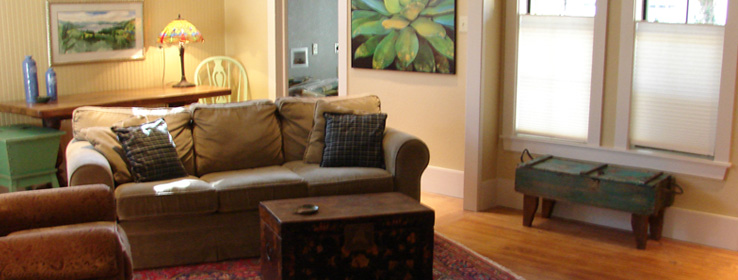Susan Reynolds helps grieving individuals make small environmental changes that can inspire major attitude shifts.
When you work in architecture or design, you understand how environment influences mood. Experience has taught you that, from furnishings to fixtures to wall color, the elements in any space work together to create ambience and enhance emotions. You've most likely used your expertise to fine-tune your own spaces into optimal environments for working and living.
Now, for a moment, imagine looking at your world through the lens of loss. Perhaps you've gone through a divorce. Maybe you've been out of work for a long time. Or maybe someone close to you has died.
How do you view your most familiar surroundings now?
Susan Reynolds, author of Room for Change: Practical Ideas for Reviving After Loss, began examining that question after her husband died of cancer. The physical therapist and certified interior designer, who owns the interior design business Revival Redesign, now helps those in the grieving process make small environmental changes that can inspire major attitude shifts.ynolds explains, "The book came out of my own personal experience. In a way it started when my husband was in hospice and I was sitting in the waiting room, and it was uncomfortable. I looked around and thought, ‘How can I make this better?'"
Ultimately, she did make the waiting room better, partnering with hospice staff to modify the furniture arrangement and repaint the walls in a calmer, more inviting tone. Says Reynolds, "Color is the least expensive and most non-threatening way to change an environment." And change, particularly what Reynolds calls "self-supportive change," is what redesign (and reviving oneself and surroundings) is all about.
"The book is an opportunity to share what worked for me, but it's more about brainstorming in that it helps jumpstart ideas about change. When I looked at grief books, I saw they were about stages of grief — keep a journal, go see a counselor. There wasn‘t anything about environment and how environment supports you. In grief there are so many changes — some you control, some you don't. Environment is one you can change for the better, and it's a small step that really empowers," says Reynolds.
The "revival" rooms that Reynolds helps her clients create through Revival Redesign are done on a minimal budget using mostly existing décor. Financially and emotionally, the process aims to keep stress at bay while promoting constructive change. Reynolds says that those who come to her for help after experiencing loss usually do so out of a desire to grow personally and feel more at ease in their living spaces. They are often surprised by how simple the redesign process is, and how good they feel as a fresh room in their home begins taking shape.
Transforming a room starts with Reynolds asking questions such as, "Where do you spend most of your time, and why? What's your favorite color?" She has found that time and again, personally treasured colors are lacking from spaces that are frequently used. Introducing those hues almost instantly improves the vibe of a room for the person who spends the most time there. "Colors speak to us and color helps change the feeling of a drab existence. Color is simple and invigorating," says Reynolds.
And it can provide feelings of happiness and hope, which are especially welcome during times of transition. Reynolds recalls working with a family that had lost a daughter. "She was fun and energetic, and the family painted their living room a mango color that both re-energized the room and reminded them of her. When people are making new color decisions, it's exciting and refreshing. Bringing color in allows for comfort, creativity and playfulness."
While the ups are encouraging, the redesign process can have some emotional dips, too. "The reluctance is, if someone changes a room, they'll lose memories or part of who they are. Because their world is changing, they worry they're devaluing the past or dishonoring a memory of a loved one if they begin to move things around," says Reynolds.
To address these concerns, Reynolds often suggests relocating select pieces from one room to another. For instance, if the easy chair of a client's late husband makes the surviving spouse uneasy in the living room, moving that chair to the guest room is a workable solution. The chair stays in the home (along with the memories), but it's not in view every day (causing pangs of loss).
"Typically when someone is nervous about a redesign choice, I ask them to sit with it for a week," says Reynolds. "If they don't like it, we find something else that works. And then usually, there's momentum that gathers. After one room is done, clutter starts getting moved out from another. Just one change can start a life-affirming process of evaluating things around you, and creating space in your mind for new viewpoints and new thoughts. One change can be the beginning of a wonderful journey."








